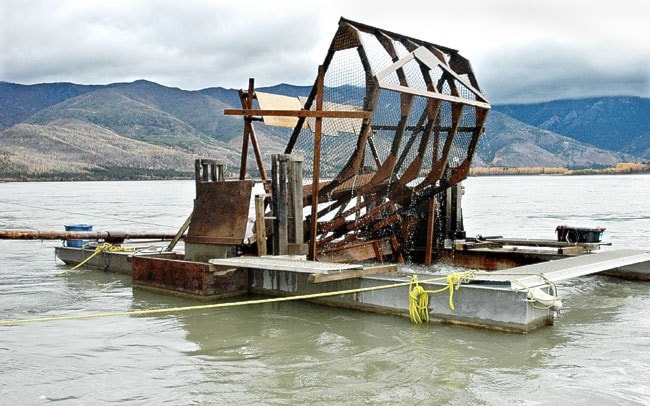Though there are fewer salmon, Alaska has managed to get more fish across the Canadian border - something it failed to do last year.
According to the international treaty between Canada and the US, at least 42,500 salmon must cross the border to replenish Canadian spawning grounds.
At the Eagle, Alaska, sonar station Monday, 49,269 fish had been counted.
That station is located just downstream of the community of Eagle, which is about 13 kilometres west of the border.
Approximately 1,500 fish need to be subtracted from the sonar count for the community’s annual harvest, said John Linderman, regional supervisor for the Alaska Department of Fish and Game.
“But that still gets you in the escapement goal range,” he said. “So, anyway you look at it, that has been achieved. It’s lookin’ real good.”
The treaty also outlines a “harvest sharing escapement goal.”
This is a percentage of the total run Alaska is expected to let through for harvesting, not spawning.
This year, projections peg that at roughly 23 per cent, or approximately 5,000 fish, said Linderman.
“The actual numbers will come later in post-season,” he said. “We’ve got another 10 days, or so, before the run really comes to a close - essentially through the 24, 25 of August, when essentially the run is done for passage at Eagle, at least. By that time, we expect to be somewhere in the 50,000-plus range. We expect probably another two, maybe 3,000 maximum fish to pass before the run’s complete.”
But these numbers are nothing to celebrate, said Canadian area manager Denis Damours.
“There’s reason to be satisfied with what we’re seeing, but we’re operating on numbers that are smaller than they were years ago,” he said. “There’s reason to be satisfied this year, in terms of management, but we still have some rebuilding to do.”
This year, Alaska’s management tactics included restricting subsistence fishers along the river.
Closures, or time restrictions on subsistence fishers, followed the run upriver.
“Quite a few areas have actually, voluntarily, started to restrict their harvests as well, even on top of the restrictions that we’ve placed,” said Steve Hayes, Yukon River area manager with Alaska’s Fish and Game Department.
“I think people are seeing the need to move fish upriver and meet the escapement goals, not just to Canada, but also within Alaska. I think fishermen are starting to understand here, and see the need to meet these goals and I think they’ve done a good job.
“Unfortunately, they’ve had to reduce their harvest this year, but I think we’re moving along.”
Last year, no restrictions were placed on subsistence fisheries.
Any dissatisfaction with the run’s management should not be linked to the vandalism and harassment that led the American department to close its office in Emmonak, near the mouth of the river, a month earlier than usual.
“It’s not specific to Fish and Game,” said Linderman, blaming mischievous youths for hurled rocks, broken windows and late night and early morning taunting.
“Certainly the community struggles with it. There’s been some other issues with some other businesses in town and some other residences as well.”
But the seasonal office bears the brunt of it during the summer months when it’s open, he said.
The decision to close the office early was made out of concern for the employees, who fear the situation getting worse.
“It’s more of an escalation since late July and early August, where staff are on edge,” he said. “Some of them are afraid it may escalate to a larger conflict. And, honestly, they just shouldn’t have to put up with that.”
The department doesn’t plan on shutting the office for good. Instead, it will work with the community and bolster security at the compound, which houses two test fisheries, the sonar station and staff accommodations.
Emmonak is located in the Wade Hampton district - one of the most impoverished districts in all of the United States, said Linderman.
According to the state’s Department of Community, Commerce and Economic Development, one-third of the town’s population is unemployed, 20 per cent live below the poverty line and, in 2009, the annual income, per person, was $12,334.
There are two state troopers based in Emmonak, but they are responsible for the entire Lower Yukon region, said Linderman, adding that there is supposed to be a village police officer in town, but currently the job is vacant.
The test fisheries, salmon management and monitoring that takes place in the Emmonak office will not be disrupted for this season because of the early closure, said Linderman. One or two staff will stay behind to finish the remaining work.
Contact Roxanne Stasyszyn at
roxannes@yukon-news.com
